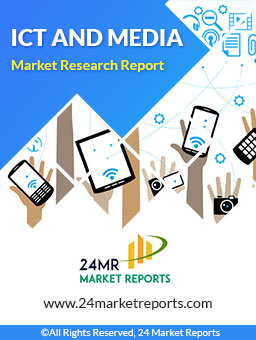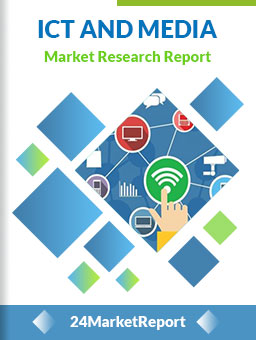
Download FREE Report Sample
Download Free sample
MARKET INSIGHTS
Global Elevator Internet of Things (IoT) market was valued at USD 1,010 million in 2024 and is projected to reach USD 1,388 million by 2032, exhibiting a compound annual growth rate (CAGR) of 4.8% during the forecast period. This growth is driven by increasing urbanization, rising demand for smart building solutions, and government initiatives promoting elevator safety standards.
Elevator IoT refers to retrofitting elevators with smart sensors, AI cameras, and gateways while maintaining existing electrical systems. This technology leverages IoT, cloud computing, and big data analytics to enable real-time monitoring, predictive maintenance, and automated incident reporting. Key components include vibration sensors for mechanical health, thermal sensors for overheating detection, and AI-enabled cameras for passenger safety monitoring.
China dominates the global elevator landscape, producing 1.455 million units in 2022 despite a 5.8% year-over-year decline, according to National Bureau of Statistics. The country accounts for over 70% of global manufacturing capacity and 60-65% of elevator sales. With 9.65 million operational elevators as of 2022 (China Elevator Association), the adoption of IoT solutions presents significant opportunities. Market leaders including Otis, KONE, and ThyssenKrupp are investing heavily in IoT integration to improve operational efficiency and meet evolving safety regulations.
Smart City Development Initiatives Accelerate Elevator IoT Adoption
Global investments in smart city infrastructure are creating significant momentum for the Elevator IoT market, with urban centers prioritizing connected vertical transportation systems. Over 1,000 smart city projects were active globally as of 2023, with Asia-Pacific leading in implementation. These projects increasingly mandate IoT-enabled elevators for their ability to reduce energy consumption by up to 30% through predictive maintenance and optimized operation cycles. Municipal authorities are recognizing how IoT sensors can decrease emergency response times during incidents by instantly transmitting elevator status to monitoring centers.
Safety Regulations Driving Mandatory IoT Integration
To know more about market statistics, Download a FREE Sample copy
Stringent safety mandates across major markets are compelling building owners to adopt IoT-enabled elevator systems. Following several high-profile elevator accidents, regulatory bodies in the European Union and North America have introduced legislation requiring real-time monitoring capabilities in all new installations. The EU Machinery Directive 2023 amendments specifically address remote diagnostics requirements, creating immediate demand for IoT solutions capable of detecting potential mechanical failures 48-72 hours before they occur. In China, where elevator usage density exceeds 9.65 million units, updated national standards now mandate IoT connectivity for all elevators in buildings over 15 stories.
➤ The regulatory shift is particularly impactful in retrofit markets, where building owners must upgrade existing elevators to comply with new IoT monitoring requirements within specified timelines.
The convergence of 5G networks and edge computing further enhances the business case for Elevator IoT adoption. Real-time data processing at the device level enables sub-second response times for critical safety functions while reducing cloud dependency. This technological synergy proves particularly valuable in high-traffic commercial buildings where elevator availability directly impacts operational efficiency.
Cybersecurity Risks Create Implementation Hurdles
While IoT connectivity brings operational benefits, it introduces significant cybersecurity vulnerabilities that challenge market growth. A recent analysis of building automation systems revealed elevator control networks as the second most targeted subsystem for cyberattacks. Hackers can potentially hijack elevator operations or access sensitive building data through unsecured IoT gateways. This risk has led some property owners to delay IoT integration until more robust security frameworks become available.
Other Challenges
Legacy System Integration Complexities
Retrofitting IoT capabilities onto older mechanical systems presents technical and financial obstacles. Many buildings still operate elevators manufactured before IoT standards existed, requiring expensive control board replacements and wiring upgrades. The average retrofit project costs 40-60% more than new installations, creating budget constraints for property managers.
Data Privacy Compliance
Elevator IoT systems collect extensive usage pattern data that falls under various privacy regulations. Compliance with GDPR in Europe and similar laws in other regions necessitates complex data governance protocols, adding implementation costs and potentially limiting functionality in some markets.
High Implementation Costs Limit Market Penetration
The premium pricing of comprehensive Elevator IoT solutions remains a significant barrier, particularly in cost-sensitive residential markets. Complete IoT systems including sensors, gateways, and analytics platforms can increase elevator project costs by 20-35%. While commercial buildings can justify this through operational savings, many residential developers view IoT as an unnecessary expense. This perception persists despite evidence showing IoT maintenance savings recovering the initial investment within 2-3 years.
Fragmented technology standards also restrain market growth, as building owners hesitate to invest in solutions that may become obsolete. With multiple competing communication protocols and cloud platforms, concerns about vendor lock-in discourage upfront commitments. This standardization issue becomes particularly acute in markets with diverse elevator fleets containing equipment from multiple manufacturers.
Predictive Maintenance Systems Create New Service Revenue Streams
The shift from reactive to predictive maintenance models presents a $2.7 billion revenue opportunity for elevator service providers. IoT-enabled vibration analysis and component monitoring can extend equipment lifespan by 25-40% while reducing unplanned downtime. Leading manufacturers are transitioning to outcome-based service contracts where payment correlates with elevator availability metrics made possible by IoT data.
Emerging markets offer particular growth potential as their building stocks modernize. Countries like India and Brazil, where elevator penetration remains below 20% of developed market levels, can leapfrog directly to IoT-enabled systems. Local manufacturers are partnering with global technology providers to deliver cost-optimized solutions tailored to these price-sensitive but tech-aware markets.
The integration of AI with Elevator IoT creates further opportunities for optimized traffic management in high-rises. Machine learning algorithms analyzing historical usage patterns can reduce passenger wait times by 15-20% through intelligent car dispatching. This capability becomes increasingly valuable as urban population densities rise and building heights increase globally.
Hardware Segment Dominates with Critical IoT Component Integration
The market is segmented based on type into:
Hardware
Subtypes: Smart gateways, sensors, AI cameras, connectivity modules
Software
Services
Subtypes: Cloud platforms, maintenance solutions, analytics services
Commercial Applications Lead with High-Security and Efficiency Requirements
The market is segmented based on application into:
Residential buildings
Commercial complexes
Industrial facilities
Public infrastructure
Predictive Maintenance Solutions Gain Traction for Operational Efficiency
The market is segmented based on technology into:
Predictive maintenance systems
Remote monitoring solutions
Passenger flow analytics
Energy optimization platforms
Cloud-Based Solutions Preferred for Scalability and Flexibility
The market is segmented based on deployment into:
Cloud-based IoT solutions
On-premises installations
Hybrid systems
Market Leaders Drive Innovation Through IoT Solutions and Strategic Expansions
The global elevator IoT market features a dynamic competition landscape influenced by both established elevator manufacturers and technology providers. As of 2024, the market is valued at $1.01 billion, with projections suggesting steady growth to $1.39 billion by 2032. This expansion is largely fueled by increasing demand for smart elevator solutions across residential, commercial, and industrial sectors.
Otis Elevator Company leads the market with nearly 18% revenue share, thanks to their Gen2 IoT-enabled elevator systems and global service network. Their 2023 launch of the OTIS ONE platform, integrating AI-powered predictive maintenance, has further strengthened their market position. Close behind is KONE Corporation, which captured approximately 15% market share through their 24/7 Connected Services and partnerships with major tech firms.
The competitive intensity has increased as traditional elevator manufacturers compete with emerging IoT specialists. Schindler gained significant traction with their PORT technology, while ThyssenKrupp's MAX cloud-based predictive maintenance system has been adopted across European markets. Meanwhile, Chinese players like Huawei and Shenzhen Smart Device are making inroads through cost-effective IoT gateways and sensors tailored for the Asian market.
Recent developments show companies are aggressively pursuing three strategies: (1) forming technology partnerships (like KONE's collaboration with Microsoft Azure), (2) expanding service offerings through subscription-based monitoring solutions, and (3) developing open platforms that integrate with building management systems. The market remains fragmented with regional players controlling about 35% of installations, particularly in China where local firms benefit from government smart city initiatives.
Otis Elevator Company (United States)
KONE Corporation (Finland)
Schindler Group (Switzerland)
ThyssenKrupp Elevator (Germany)
Hitachi Ltd. (Japan)
Fujitec Co., Ltd. (Japan)
Huawei Technologies (China)
IBM Corporation (United States)
Microsoft Corporation (United States)
Shenzhen Smart Device (China)
Jiangsu Leader Info (China)
Guangzhou Robustel (China)
Dinac Yinghui IoT Technology (China)
The Elevator Internet of Things (IoT) market is witnessing accelerated growth due to the rising adoption of artificial intelligence (AI) for predictive maintenance. Modern IoT-enabled elevator systems leverage AI-driven analytics to predict component failures before they occur, reducing downtime by up to 30%. This is particularly critical in high-traffic commercial buildings where elevator uptime directly impacts operational efficiency. Furthermore, AI-powered anomaly detection algorithms can identify irregular patterns in elevator operations, enabling proactive maintenance interventions. Cloud-based data aggregation platforms further enhance these capabilities, allowing real-time monitoring of thousands of elevators from centralized dashboards. Major manufacturers now report AI-integrated systems can extend equipment lifespan by 15-20%, creating significant cost savings for building operators.
Smart City Infrastructure Development
Global smart city initiatives are fuelling demand for IoT-enabled vertical transportation solutions. Municipal regulations in over 40 countries now mandate IoT connectivity in new elevator installations for public safety monitoring. China's latest Five-Year Plan specifically allocates $1.2 billion for smart elevator upgrades across municipal buildings. This aligns with the broader trend where urbanization rates exceeding 65% in developing economies are driving intelligent infrastructure investments. Elevator IoT systems are increasingly being integrated with building management platforms, enabling synchronized operation with other smart systems like HVAC and security.
While connectivity offers numerous benefits, the industry faces growing cybersecurity risks that could potentially restrain market growth. Recent vulnerability assessments reveal that 28% of commercial elevator IoT systems have outdated encryption protocols, making them susceptible to cyber attacks. Manufacturers are responding by developing proprietary communication protocols and blockchain-based security layers. The development of 5G-enabled private networks for elevator communications is emerging as a potential solution, offering both high bandwidth and enhanced security compared to traditional WiFi connections. These security investments now account for approximately 18-22% of total IoT elevator solution costs, reflecting their strategic importance.
North America
The North American elevator IoT market is characterized by rapid technological adoption and stringent safety regulations. With smart city initiatives gaining traction in major urban centers like New York and Toronto, the demand for connected elevator solutions is surging. U.S. building codes increasingly mandate IoT-enabled safety features, driving market growth. While initial adoption concentrated on commercial high-rises, the residential segment is now showing robust demand due to premium property development trends. Cybersecurity remains a key concern, prompting specialized solutions from providers. The presence of major OTIS and KONE operations ensures cutting-edge product availability, though integration with legacy systems presents ongoing challenges for retrofit projects.
Europe
Europe's mature construction sector and advanced digitization make it a prime market for elevator IoT solutions. EU directives on building management systems are accelerating retrofitting of existing elevator infrastructure, particularly in Germany and France. The region leads in predictive maintenance adoption, with sensors monitoring over 60% of commercial elevators in Western Europe. Privacy regulations like GDPR have prompted unique data handling protocols for elevator monitoring systems. Scandinavia shows particular strength in sustainability-focused solutions, integrating elevator IoT with broader building energy management. However, varying technical standards across countries complicate cross-border deployments for service providers.
Asia-Pacific
As the epicenter of global elevator production and installation, Asia-Pacific dominates the elevator IoT market volume. China's vast installed base (over 9 million units) represents massive retrofit potential, while India's construction boom drives new system deployments. Japanese manufacturers lead in developing earthquake-responsive IoT systems, a critical feature in the seismically active region. While smart city projects in Singapore and South Korea showcase cutting-edge implementations, cost sensitivity in developing markets slows premium feature adoption. The coexistence of ultra-modern IoT elevators in city centers alongside basic rural installations creates a bifurcated market dynamic across the region.
South America
The South American market shows growth potential tempered by economic constraints. Brazil accounts for nearly half the regional market, with Rio and São Paulo buildings prioritizing security-focused IoT features. High-end residential developments increasingly include smart elevator systems as value-added amenities. However, currency fluctuations and infrastructure limitations hinder widespread adoption outside premium segments. Maintenance optimization presents the strongest value proposition, as elevator downtime carries heavy costs in high-rise urban environments. Local regulations are gradually incorporating IoT requirements, though enforcement remains inconsistent across countries.
Middle East & Africa
Gulf states, particularly UAE and Saudi Arabia, drive regional demand through ambitious smart city projects featuring IoT-enabled vertical transportation. Dubai's building codes now require advanced elevator monitoring systems in new constructions. African urban centers show nascent demand, focused primarily on basic remote monitoring to address maintenance challenges. The market divides sharply between oil-economy nations implementing cutting-edge solutions and developing markets seeking affordable reliability improvements. Lack of technical expertise presents barriers in some areas, creating opportunities for turnkey service providers. The region's extreme climate conditions necessitate specialized sensor solutions for elevator systems.
This market research report offers a holistic overview of global and regional markets for the forecast period 2025–2032. It presents accurate and actionable insights based on a blend of primary and secondary research.
✅ Market Overview
Global and regional market size (historical & forecast)
Growth trends and value/volume projections
✅ Segmentation Analysis
By product type or category
By application or usage area
By end-user industry
By distribution channel (if applicable)
✅ Regional Insights
North America, Europe, Asia-Pacific, Latin America, Middle East & Africa
Country-level data for key markets
✅ Competitive Landscape
Company profiles and market share analysis
Key strategies: M&A, partnerships, expansions
Product portfolio and pricing strategies
✅ Technology & Innovation
Emerging technologies and R&D trends
Automation, digitalization, sustainability initiatives
Impact of AI, IoT, or other disruptors (where applicable)
✅ Market Dynamics
Key drivers supporting market growth
Restraints and potential risk factors
Supply chain trends and challenges
✅ Opportunities & Recommendations
High-growth segments
Investment hotspots
Strategic suggestions for stakeholders
✅ Stakeholder Insights
Target audience includes manufacturers, suppliers, distributors, investors, regulators, and policymakers
-> Key players include Otis Elevator, KONE, Schindler, ThyssenKrupp, IBM, Microsoft, Huawei, and other regional leaders.
-> Key growth drivers include smart city initiatives, aging elevator infrastructure modernization, and stringent safety regulations.
-> Asia-Pacific dominates with over 60% market share, driven by China's 9.65 million operational elevators.
-> Emerging trends include predictive maintenance using AI, cloud-based monitoring platforms, and integration with building management systems.

Speak to our Custom Research Team and get the Custom Research in a budget
Custom ResearchFrequently Asked Questions ?
A license granted to one user. Rules or conditions might be applied for e.g. the use of electric files (PDFs) or printings, depending on product.
A license granted to multiple users.
A license granted to a single business site/establishment.
A license granted to all employees within organisation access to the product.
Upto Working 24 to 48 hrs
Upto 72 hrs max - Weekends and Public Holidays
Online Payments with PayPal and CCavenue
Wire Transfer/Bank Transfer
Hard Copy



 Industry Market Size
Industry Market Size SWOT Analysis
SWOT Analysis Industry Major Players
Industry Major Players Revenue Forecasts
Revenue Forecasts Historical and Forecast Growth
Historical and Forecast Growth Profitability Analysis
Profitability Analysis
























